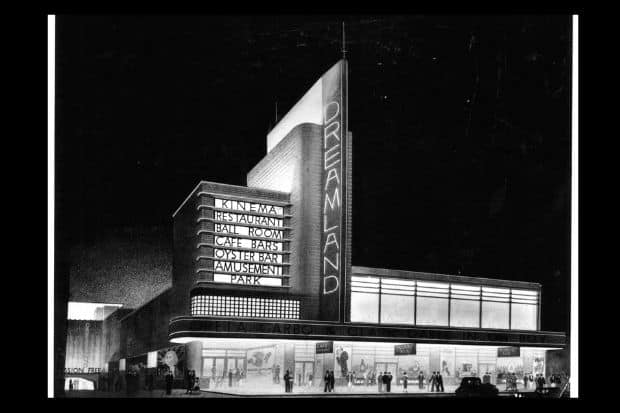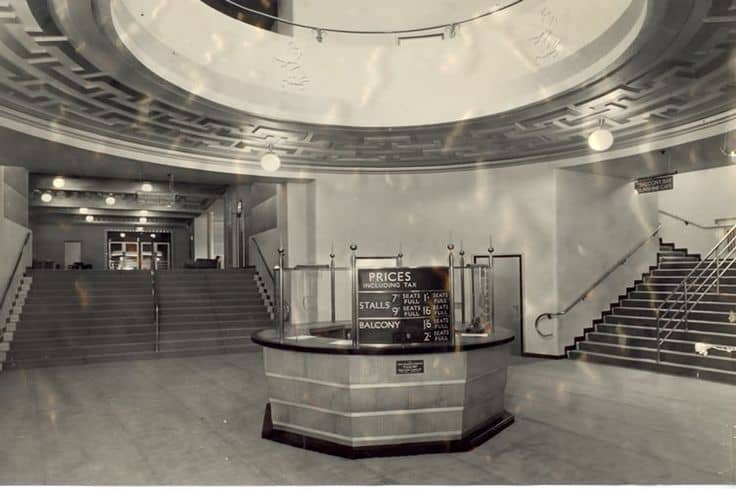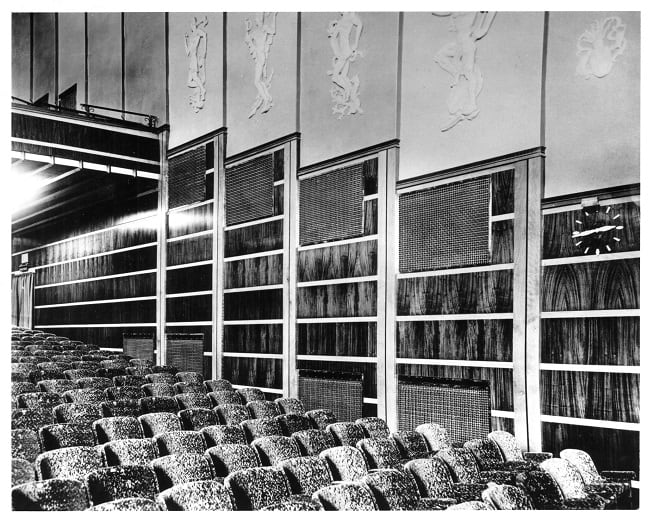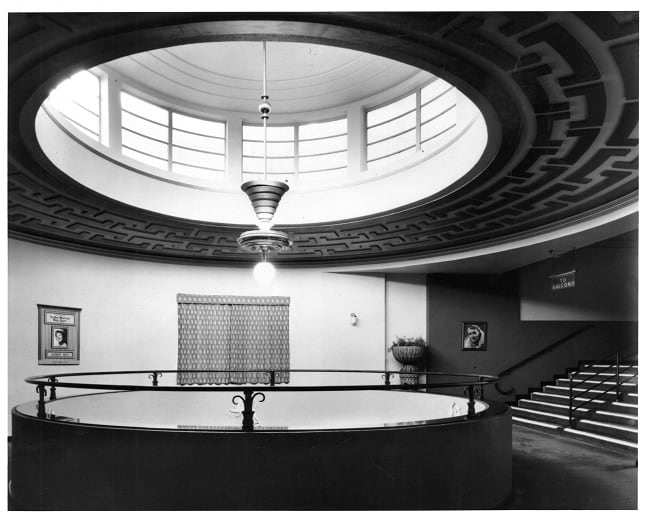
The role of The Dreamland Heritage Trust is to conserve and promote Dreamland’s rich heritage, the Historic Rides Collection and the Archive, through a comprehensive programme of schools activities, learning, engagement, volunteering, training and interpretation opportunities.
Here the Trust marks the 86th anniversary of the Dreamland Cinema:
Today marks the 86th anniversary since the opening of the Dreamland “Super” Cinema on the 22nd March 1935.
Built on the site of the 900 seat Dreamland Variety Theatre of 1923, (later re-named Dreamland Cinema), John Henry Ilse invested over £500,000 into the Dreamland site, between 1920 and 1935, constantly adding new rides and facilities, and culminating in the construction of the Dreamland cinema complex in 1934.
The project was overseen by Iles’s son, John Bird Iles, in partnership with the established architects, Leathart & Granger and was strongly influenced by German cinema design, with no expense spared on the project.

The spectacular art deco expressionist-influenced brick idiom frontage of the cinema was the first of its kind in Britain. The huge art deco cinema fin tower gave the building prominence from a great distance along the shoreline and was to prove influential on the subsequent design of the Odeon chain of cinemas.
The Dreamland Cinema and Ballroom building was completed in the early part of 1935 and opened its doors to the public at a grand event on Friday 22nd March 1935, attended by invited guests and dignitaries.
The first film shown at the new Dreamland cinema was “Them Thar Hills” starring Laurel & Hardy, which was followed by “The Painted Veil” starring Greta Garbo.

Inside the auditorium, seating was provided for 1,328 in the stalls and 722 in the balcony. The interior featured art deco style design, with sculptures of sea nymphs set into the recesses each side of the auditorium designed by artist Eric Aumonier. The final bill for the development of this magnificent 2,200 seated art deco style cinema and ballroom came to £250,000, the equivalent of about £12.5 Million today.
The cinema had a fully equipped stage with a 40ft wide proscenium, equipped with a Western Electric (WE) sound system. Along with the now infamous Compton organ with illuminated console and a grand piano attached, opened by the organist Lewis Gerard.
The Dreamland cinema closed from 1940 due to the war and did not re-open until 1st July 1946. The building survived in its original form until 1973 when the balcony area was converted into a twin cinema with seating for 378 and 376 respectively, with the former stalls area becoming a live theatre using the full facilities of the stage. The new facilities re-opened on 22nd April 1973 but proved unsuccessful and closed on 11th January 1975 and was converted into a bingo hall.
A third screen seating 60 persons and using video projection was created in what had previously been the balcony bar area. This opened on 10th May 1981 and continued until closing in 1993 when the Dutch firm Bembom Brothers took over the running of the cinema and amusement park.

It remained open with bingo in the former stalls, where the Compton organ was still occasionally used for concerts.
The two cinemas remained open in the former circle area and were operated by a small Independent chain Reeltime Cinemas, until the cinemas permanent closure on 1st November 2007 following closure of the bingo club operation in the former stalls area the previous year.
Restoration of the exterior was begun in February 2011, and repairs to the building began in earnest in June 2011. Restoration of the exterior was completed in summer of 2017 and yellow neon has been installed to highlight the building, restoring the exterior frontage to its former 1930’s glory.
In 1992, Dreamland Cinema was designated a Grade II Listed building by English Heritage. In early-May 2008, the building was up-graded to Grade II* Listed.
The Dreamland estate was sold by Thanet council to park operator Sands Heritage Ltd in December.

